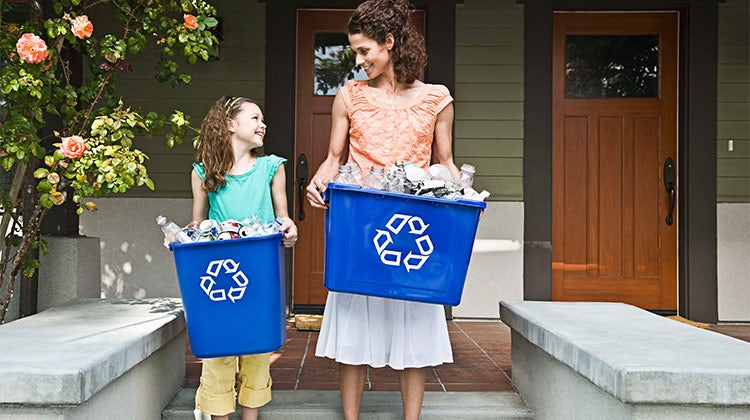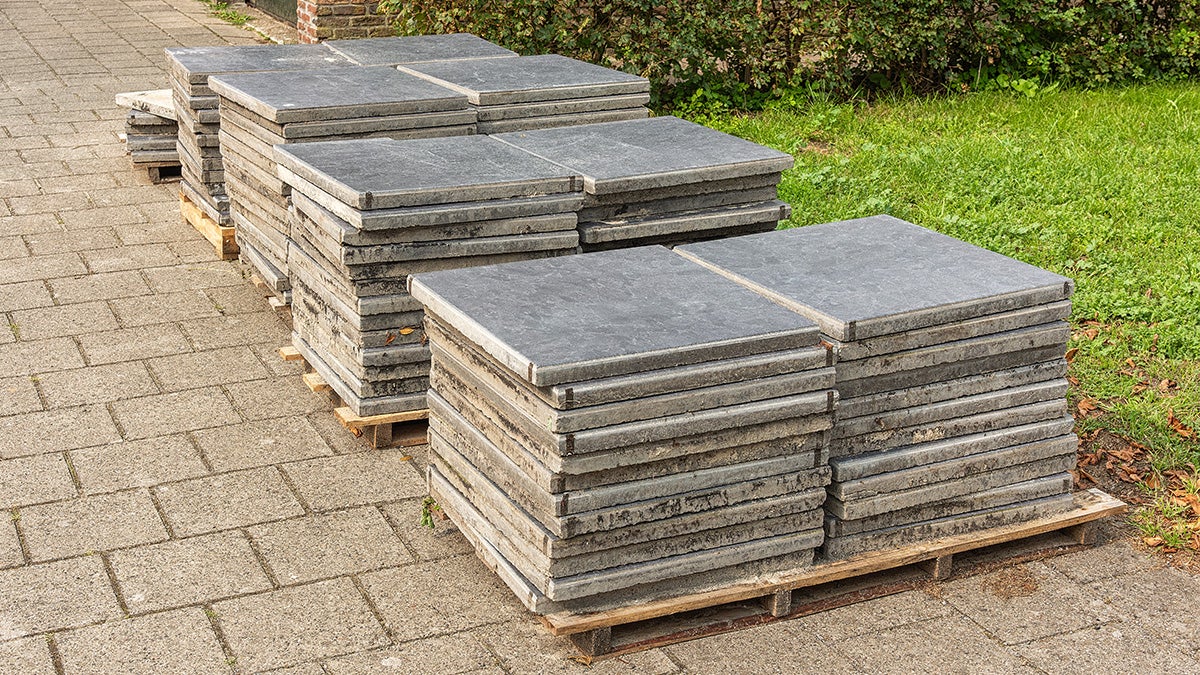Every year it’s becoming increasingly important to be aware of how our actions can affect the environment around us. When you’re starting to consider different ways to be more environmentally friendly, deciding what to focus on first can be daunting. A great way to start is to learn about your carbon footprint, and how you can improve it. Check out 1-800-GOT-JUNK?’s easy guide to carbon footprints below!
What is a carbon footprint?
According to Nature.org, “A carbon footprint is the total amount of greenhouse gasses (including carbon dioxide and methane) that are generated by our actions.” These actions include anything that directly creates emissions of these types of gasses, such as the burning of fossil-fuel through transportation, creating new items or products, as well as electricity use.
While our carbon footprint typically focuses on greenhouse gasses such as carbon dioxide and methane, it can also include nitrous oxide and chlorofluorocarbons (CFCs). A carbon footprint can be used by individuals and businesses alike, making it a great place to start when considering how best you can help the environment. Examples of things that can affect it are the foods you eat, clothes you buy, and energy you use on a daily basis.
Origins of the carbon footprint concept
Where does the carbon footprint concept come from? The origins of it started in the early 1990’s, when a Canadian ecologist, William Rees, and a Swiss regional planner, Mathis Wackernagel, invented the concept of the ecological footprint while at the University of British Columbia. Rather than focusing on the impacts of an individual person or company, the ecological footprint focuses on the total land area that is needed to sustain a population. The Britannica Encyclopedia notes that this includes different activities such as “water use and the amount of land used for food production.”

Our global carbon footprint
Carbon footprint can increase due to carbon dioxide emissions on an individual level, and it all adds up to cause a larger global impact. The average carbon footprint around the world is approximately four tons. However, the carbon emissions per capita can change drastically depending on the country. In the United States, the average carbon footprint for just one person is 16 tons. Carbon emissions in the US are one of the highest in the world! As emissions globally have grown rapidly over the past few decades, it is important to consider how we can create positive change.
Greenhouse gasses impacting global emissions
The three main greenhouse gasses that have increased the most due to humans are carbon dioxide, methane, and nitrous oxide. These three greenhouse gasses have increased in the earth’s atmosphere significantly since the Industrial Revolution. The average household co2 emissions per year in the US is 7.5 tons. The increase in these gasses have grown anywhere from 20% to 250% since pre-industrial times, much higher than they’ve been in almost a million years! For example, human activity currently releases “over 30 billions tons of carbon dioxide into the atmosphere every year”, according to the United States Environmental Protection Agency. Transportation, electricity production, heating, and livestock are some of the many sources of greenhouse gas emissions, and our use of all of these examples have grown as our world has become more industrialized over the years.
Reducing carbon emissions for climate change
Why is it so important to reduce carbon emissions? The simple answer: for the planet! The growth of greenhouse gas emissions over the years have led to the earth’s surface temperature to rise at a significant rate. According to Our World In Data, to have the best chance of avoiding a 2℃ rise in global temperatures, the average global carbon footprint per year needs to drop to under two tons by 2050. While that seems like a huge drop to be making in a short amount of time, lowering individual carbon footprints from 16 tons to two tons doesn’t happen overnight! When we make small changes to our actions, like eating less meat, taking fewer connecting flights and line drying our clothes, it can make a significant difference.
In an effort to manage the carbon emissions being released into the air, many initiatives have been created to support lowering emissions, such as the Paris Climate Agreement. At 1-800-GOT-JUNK?, we aim to donate and recycle where possible, increasing the life cycle of the items we take away and minimizing their impact on the environment. Some of our 1-800-GOT-JUNK? franchises are finding various ways that they can help the environment through donating to local charities, diverting items from landfills and supporting re-use of good quality items. Whether it’s individuals, businesses, or world governments, it is important for us all to take steps to minimize carbon emissions.

Carbon footprint calculation
Now that you know the importance of minimizing your carbon emissions, where do you get started? The best place to begin is with yourself. So, how to calculate your carbon footprint?
Your carbon footprint is a calculation of the amount of greenhouse gas emissions you produce in your daily life. These greenhouse gasses include carbon dioxide, nitrous oxide, methane, fluorinated gasses, and more. However, how do you go about calculating your carbon footprint? It’s easier than you’d think! The best way to calculate your carbon footprint is through a Carbon Footprint Calculator. You can find many different options online, but we find the calculator on Nature.org to be a great resource. By knowing what your carbon footprint is, you are able to motivate yourself and set a goal for what you would like it to be!
10 simple ways to reduce your carbon footprint
Now that you know what a carbon footprint is and you know how to calculate yours, you may be wondering, “What can I do to reduce my carbon footprint?”. There are a number of different ways to reduce your carbon footprint, to get started take inspiration from these 10 simple tips!
- Eat more fruits and vegetables: Incorporate more fruits and vegetables into your meals, and consider growing your own vegetables if possible. According to the Climate Action Business Association, gardening your own vegetables can reduce your carbon footprint by up to 68 lbs of emissions per year.
- Buy energy efficient appliances: When you need to purchase new appliances like fridges or washing machines, opt for more energy efficient options.
- Remember the 3 R’s: Reduce, reuse and recycle! At 1-800-GOT-JUNK?, we recycle the recyclables and donate the donate-ables, so your unwanted items can hopefully find a second home!
- Minimize driving your car: If possible, use alternate modes of transportation over your car. Not only is biking to work occasionally healthier for you, it will reduce emissions during your commute. Taking a bus when possible also saves you the trouble of finding parking in dense city centers!
- Reduce your meat consumption: A fun way to reduce eating meat with every meal, particularly beef, can be by participating in “Meatless Mondays” to experiment with new recipes while you also eat less animal foods. Meat, cheese, and eggs have the highest carbon footprint of food production, so reducing your consumption of them will help reduce your carbon footprint too.
- Carbon offset air travel: While traveling by air can be essential, consider contributing to carbon offset credits and schemes when flying. These initiatives help invest in environmental projects that will reduce emissions, and ultimately help balance out your carbon footprint.
- Bring reusable shopping bags: Take your own reusable bags to the grocery store and avoid products with excessive plastic packaging. A great hack is to invest in reusable cloth bags for your fruits and vegetables, so you don’t have to use the plastic bags provided at most grocery stores. Just don’t forget your bags at home!
- Avoid fast fashion: That cute top may be tempting, but try to avoid fast fashion purchases where possible, and opt for quality, ethically made clothes or thrifted items. While the price tag may be appealing at first, the majority of fast fashion clothing is not made to last and will result in multiple re-purchases over the span of one quality item’s lifespan.
- Use less air conditioning while you drive: While it may be impossible to avoid using the air conditioning altogether during the hot summer days, using it less often or on a lower setting will help reduce emissions!
- Swap to energy efficient light bulbs: Replace incandescent light bulbs and CFL with LEDs when they burn out. As you slowly swap over your lightbulbs, it will not only shrink your carbon footprint, but it will also help lower your energy bill.

As our climate and environment continue to be impacted by greenhouse gas emissions, it’s important to take steps to reduce our carbon footprints in our everyday life. Whether it’s biking to work on a sunny day, bringing your reusable bag to the grocery store, or ensuring your unwanted items are being properly disposed of, every small change can have a larger impact toward our carbon emission contributions. No matter your age, the environment will always be an important part of our lives. Let’s make the world a greener place together!






